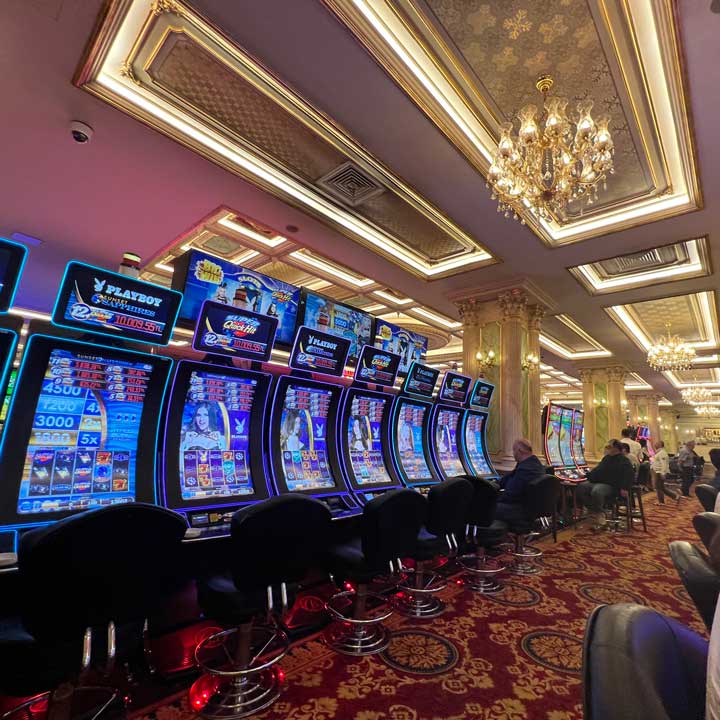The saga of fruit machines is a fascinating journey that reflects the evolution of amusement and betting across the generations. Beginning in their simple origins in the 1890s to turning into a mainstay in gaming halls throughout the world, these games of chance have experienced remarkable changes. Slot machines have captivated players with their colorful graphics, enticing storylines, and the hope of transformative wins.
At first designed as mechanical instruments with spinning cylinders and limited icons, slot machines have transformed into cutting-edge digital games that feature advanced technology and interactive elements. In the present day, they welcome millions of players, each hoping to strike it lucky with just the yank of a handle or the touch of a tap. Exploring the intriguing background of these devices unveils not just the tale of a popular hobby, but also a reflection of social evolution and technological advancements over the ages.
The Beginnings of Slot Machines
A tale of slot machines originates in the late 19th century, a time when machines were increasingly popular in entertainment venues. A groundbreaking slot machine came into existence by Charles Fey in 1895, referred to as the Liberty Bell. This machine featured 3 spinning reels and 5 symbols: hearts, diamonds, spades, a horseshoe, and the famous Liberty Bell. Players pulled a lever to spin the reels, and if the symbols matched in a particular combination, players won a payout. Fey’s invention quickly captured the attention of gamblers and set the foundation for future developments in casino slots games.
As the idea of the slot machine gained traction, various inventors sought to improve upon Fey’s design. By the early 1900s, slot machines were becoming a common sight in saloons and amusement parks. In 1907, the initial electromechanical slot machine was created by Herbert Mills, which featured a more intricate system of payout mechanisms and the iconic fruit symbols that are still associated with slots today. This evolution marked a major shift in the gaming industry, as machines became more entertaining and user-friendly, drawing in more players.
The popularity of slot machines continued to soar throughout the first half of the 20th century, leading to their widespread adoption in casinos across the United States. However, as legal restrictions on gambling during the Great Depression posed challenges for the industry. Many machines were banned, but this did not stop innovators. Instead, they adjusted by creating machines that gave out candy or gum instead of cash prizes, effectively bypassing the restrictions while still offering the thrill of a casino slots game. This ingenuity kept the spirit of gambling alive, setting the stage for the eventual resurgence of slot machines in modern casinos.
Advancement of Casino Slot Technology

The story of gambling machines started in the final 19th century with the creation of the first mechanical slot machines. A mechanic named Charles Fey, a West Coast mechanic, introduced the Liberty Bell slot machine in 1895, which included three spinning reels and five images: heart shapes, diamonds, spade symbols, a horseshoe, and the bell symbol itself. This simple yet captivating design laid the foundation for the future of slot games, creating an swift attraction for players searching for entertainment and a opportunity to earn. pgslot
As innovation matured, so did the design and functionality of slot machines. By the mid 20th era, electronic mechanical machines surfaced, incorporating electric parts to improve gameplay and amplify payout possibilities. These improvements enabled for increased sophistication features like various paylines and greater jackpots. The casinos adopted these innovations, resulting in the rise of gambling devices as a major contributor of revenue within the gaming industry, essentially altering the experience of playing slots.
The closing 20th and beginning 21st centuries introduced the age of digital technology, leading to the debut of digital slots. These gaming units substituted traditional reels with screens, enabling even more innovation in themes and gameplay features. Players could now enjoy engaging graphics and sound effects, along with interactive bonus rounds. The shift to online casinos further revolutionized the slots experience, rendering slots reachable to a global population at any time and everywhere, thus marking a new phase in the progression of gaming machine innovation.
A Social Influence of Gaming Machines
These gaming machines have become not only a form of leisure; they have integrated into the fabric of popular culture. From movies and TV series to music and literature, these famous gaming machines often serve as symbols of luck and gambling. Films like Casino and Ocean’s Eleven prominently feature slots, depicting them as thrilling yet uncertain elements of the casino atmosphere. Their unique attraction lies in the noise of coins clinking, the spinning reels, and the vibrant blinking lights, which in unison create an electric atmosphere that draws people in.
In addition, slot machines have influenced social gatherings and events, making them a focal point in casinos and gaming venues. Many people do not just go to a casino to gamble; they attend for the full experience, which includes the social interactions and the lively ambiance surrounding these machines. Special contests and themed gaming nights centered around these games also showcase their popularity, fostering community engagement and collective fun among players. This community aspect has contributed to the machines’ enduring popularity.
The advancement of technology has also transformed this cultural impact. Digital and online slots have broadened access to these games well beyond the walls of physical casinos. Players can now get their favorite casino slot games from home or on the move, leading to the rise of virtual forums and discussion boards where enthusiasts exchange strategies and experiences. The continuous innovation in game design and the integration of storytelling have kept the cultural importance of slot machines alive, attracting new generations of players while maintaining a connection to their cultural roots.
